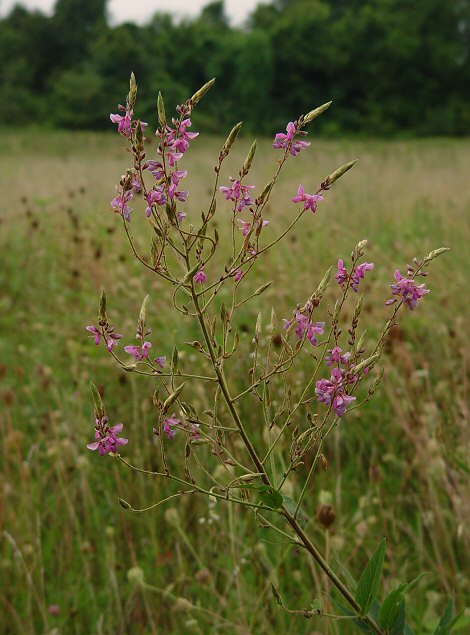Desmodium canadense (L.) DC.
Showy Tick Trefoil

Native
CC = 4
CW = 3
MOC = 26
© DETenaglia
Desmodium canadense (L.) DC.Showy Tick Trefoil | |
 |
Native CC = 4 CW = 3 MOC = 26 |
© DETenaglia |
|
Family - Fabaceae/Faboideae Stems - To +2m tall, herbaceous, erect, pubescent, with vertical striations.
Leaves - Alternate, trifoliolate, petiolate, stipulate. Leaflets 3.5-14cm long, ovate to lanceolate, obtuse or short pointed at tip, appressed pubescent above, pilose below. Stipules to 1cm long, pubescent, lanceolate, striate.
Inflorescence - Terminal racemes or panicles to +40cm long.
Flowers - Papilionaceous, pink to rose, +/-1cm long. Standard with two yellow spots at base. Stamens diadelphous. Calyx bilabiate, short-tubular. Loments rounded to slightly angled on the ventral margin, rounded on dorsal margin, typically 4-6-jointed, pubescent, to 7mm long, 5mm wide.
Flowering - July - September. Habitat - Prairies, thickets, wet meadows, lake margins, roadsides, railroads. Origin - Native to U.S. Other info. - This tall, weedy species can be found scattered throughout most of Missouri. It can be identified by its large size, large flowers, pubescent stems and leaves, and lanceolate leaflets. Photographs taken off Hwy H, Shannon County, MO., 8-10-03 & 7-30-04. |